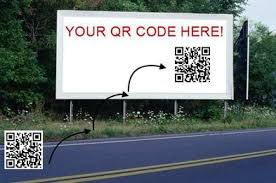Accessibility is at the foundation of transportation policy, but a minor technology seems to be obstructing the path, at least when it comes to wayfaring. The signage for wayfaring and orienting travelers is increasingly populated with QR codes and it may be getting us lost.
QR (quick response) codes are encountered when transit riders need help with timetables or routes, when pedestrians aim to study a local map, or cyclists need to find the protected bike path. QR codes are also replacing traditional indoor wayfaring signs indoors in airports, malls, and sports arenas.
Accessible Nots:
Accessibility has been overlooked. Access to a QR code requires that people carry a modern phone with an adequate camera. Children and teens are disadvantaged- perhaps their parents are trying to hold off getting them one. Older people are also disfavored; they are less likely to own smartphones with QR readable cameras, and less conversant with using this particular feature. But, in some ways, QR signage disfavors everyone. The information-seeker has to halt, switch gears to locate their phone from a pocket or purse, and face distraction from other items on their phone. Using a QR code is not so seamless.
Accessibility can also be situational. QR codes present a problem in an area where there is little or no data reception. Data reception will vary by the phone model and cell carrier. Newcomers and tourists, those most likely to need wayfaring information, face the greatest handicap using local WiFi and known passwords.
Robotic Yes’:
For many, QR signage seems appears as a form of robotic language. And, like many things on the Internet, it is not entirely safe. The end user is at a loss to determine whether a QR code will link to an informational site or to an alias that redirects to a bad-player. Significantly, the personal identity of the phone user can also be at stake. Sites on the redirect could gather the smartphone’s unique identifier, a number, and the geolocation.
There are additional risks. Say the QR opens to a city map with local streets and destinations. In real-life Google or Apple maps are a more direct and economical way of accessing a similar display. But the provider, not the user, gains more data when Bluetooth is turned on a phone, and they can track how the client navigates after they access the QR wayfaring. Inside a shopping center, this could turn into surveillance and covert marketing.
In principle, QR codes are supposed to make it easier to get from here to there. Recently, in airports and transportation hubs, Uber, the ridehail company, displays a prominent billboard with QR codes. Its encourage riders to scan for a ride. That is all well and good, but a first-time passenger who does not have their pre-installed transportation app is also unlikely to be familiar with the digital payment and location service necessary to transact the ride. So, at the end of the day, the QR signage may offer more hype than hope.
MUTCD:
Signage should also be transparent. This is not new. In our transportation system, and notably for public roads, signage and pavements must conform to a standard color, standard size, and a uniform lettering. This is detailed in the MUTCD, the Manual on Uniform Traffic Control Devices. MUTCD undergoes significant testing so that signage is similar across 50 states, and is readily seen and easily interpreted.
The Federal Highway Administration that administers the MUTCD makes the standards readily available to the private sector, places like sports venues, theme parks and airports. Notably, the MUTCD does not have standards for QR codes. Given the potential for a QR to hype or misdirect, it’s worthy of a second look. Are they accessible to all, and where are they sending us?

